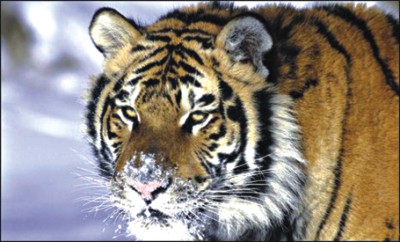 The effective population of the critically endangered Amur tiger is now fewer than 14 animals, say scientists.
The effective population of the critically endangered Amur tiger is now fewer than 14 animals, say scientists.
Approximately 500 Amur tigers actually survive in the wild, but the effective population is a measure of the genetic diversity of the world’s largest cat.
Very low diversity means any vulnerability to disease or rare genetic disorders is likely to be passed on to the next generation.
The findings are reported in the journal Mammalian Biology.
The Amur tiger, or Siberian tiger as it is also known, once lived across a large portion of northern China, the Korean peninsula, and the southernmost regions of eastern Russia.
During the early 20th Century, the Amur tiger was almost driven to extinction, as expanding human settlements, habitat loss and poaching wiped out this biggest of cats from over 90% of its range.
By the 1940s, just 20 to 30 individuals survived in the wild. The new study has identified that this recent “genetic bottleneck” — when the breeding population of tigers was so critically low – has decimated the Amur tiger gene pool.
A more genetically diverse population of animals has a much better chance of survival; it is more likely, for example, to contain the genetic resistance to a variety of diseases and less likely to succumb to rare genetic disorders, which can be “cancelled out” by healthy genes.
Scientists in Russia, Spain and Germany worked together to analyse DNA samples from 15 wild Amur tigers in the Russian Far East.
They took blood samples from the animals and screened them for certain “markers” — points in the DNA code that show that an animal had parents that were genetically very different from each other.
The results revealed evidence of the genetic bottleneck during the tigers’ recent history, when the variety of genes being passed on dramatically reduced.
Genetically speaking, the Amur tiger has not recovered from this.
Courtesy of www.bbc.co.uk



